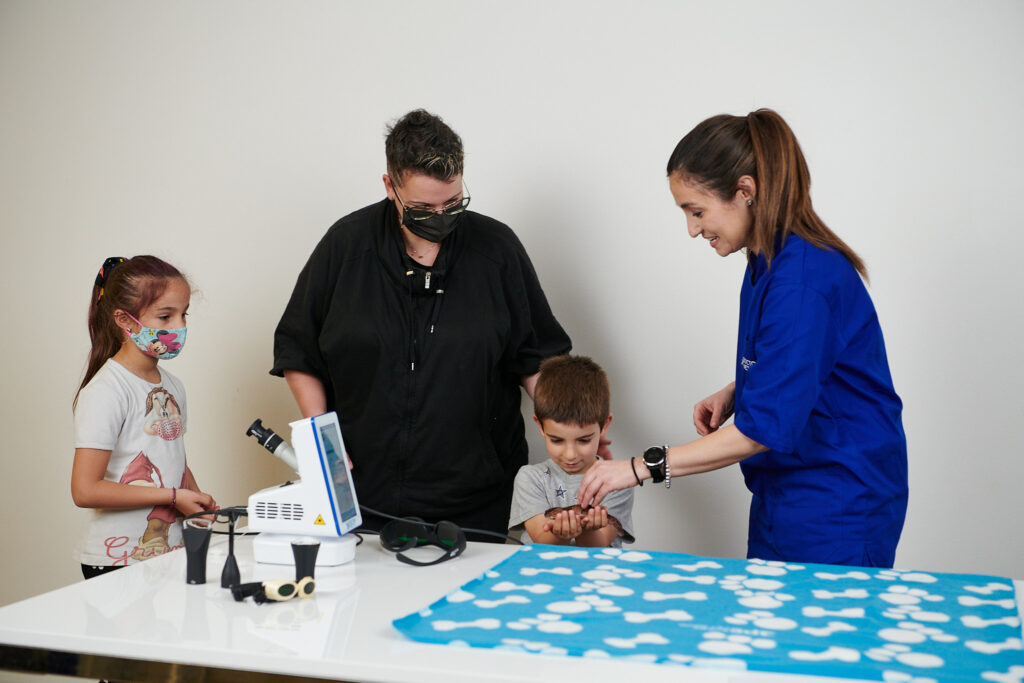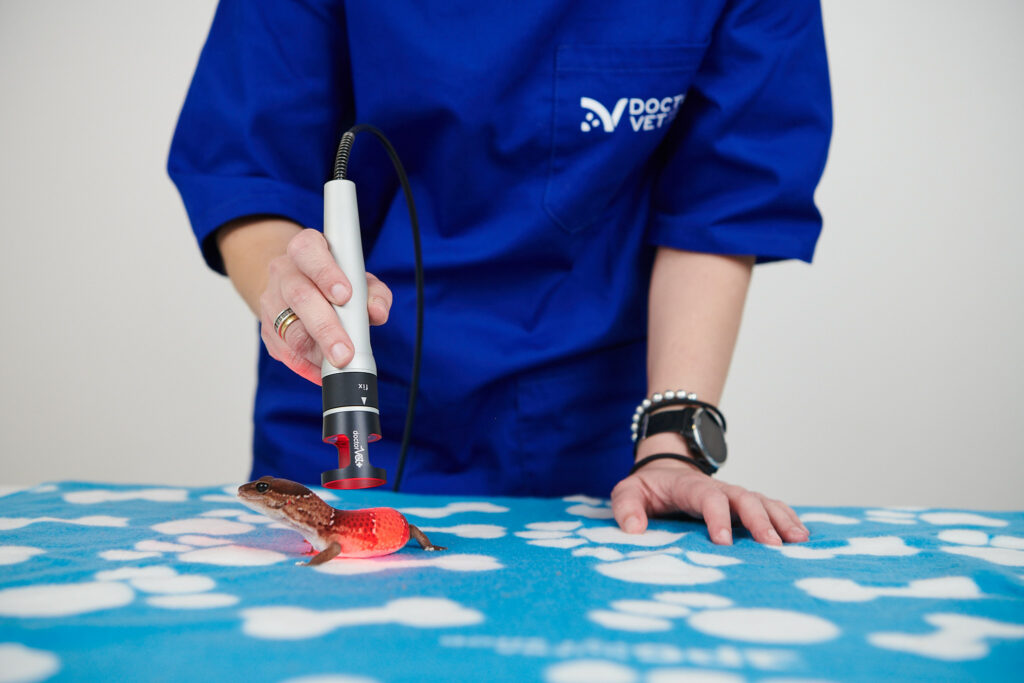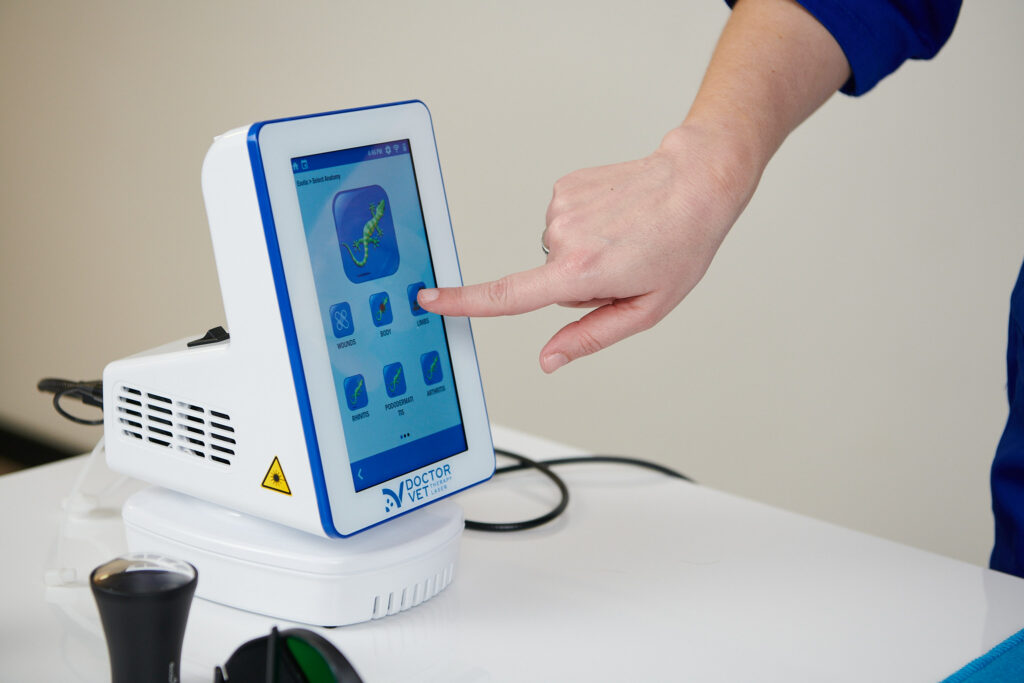In the blog post entitled “Are you thinking about buying a Therapeutic Laser Device?”, we explained the importance of considering the specific features of these devices and understanding the nature of laser therapy. In other words, as veterinarians, it is important to understand the basics of laser technology and the effect of photobiomodulation, as well as the various parameters and how they help to create these laser therapy effects. These parameters include wavelength, power, frequency and dose.
Numerous laser therapy devices can currently be found in veterinary medicine, with specific protocols for certain pathologies and a broad range of other protocols for different species, layer colour, joints and pathologies.
After getting to grips with all that, another important factor in understanding the characteristics of your device is to know the treatment technique, its speed and the choice of contact mode or non-contact mode. Until now, few devices gave importance to the application method.
However, this can become a significant variable when combining parameters and can significantly alter the results from any treatment applied.
Once we have all this knowledge and based on the characteristics of our device, we should now know the necessary treatment technique and application mode for treating each pathology. So, are we ready to start using our laser therapy device?

The answer to that question might well be… Yes, everything is ready to start using our laser device!
Nonetheless, following years of experience in providing advice to other colleagues about how to use laser therapy with various pathologies, whenever a clinic decides to purchase a laser device and seems to understand all the aforementioned parameters, what we have come to realise is that many questions still arise about the recommended protocols for a certain pathology because no laser device will have protocols for every pathology that exists in veterinary medicine.
So, are most laser devices incomplete in terms of their protocols?
The answer to that question is no. These doubts often stem from not having a clear objective for the laser therapy; in other words, what objectives do we want to achieve for that specific pathology?

As veterinarians, we should know about the pathology; i.e. the damage it causes to the organism, the tissues involved and affected, as well as any future injuries that may arise as a result. This knowledge will determine the objectives we wish to achieve with the laser therapy.
Remember, the general effects of laser therapy are pain alleviation, inflammation control and a biostimulant effect in various tissues.
For the latter, we need to know the characteristics of the various tissues and how the varying density of those tissues has a different affinity for frequencies and the continuous waveform.
Hence, knowing the pathology and knowing the general effects of the laser, we can clearly establish the objectives we wish to achieve with laser therapy during the course of an injury. For an anterior cruciate ligament tear, for example, our objectives immediately after surgery are to alleviate pain and control inflammation.
When we see that these objectives have been achieved over the course of our sessions, the next objective for our laser therapy would be ossification.
Remember that laser therapy is a treatment just like any other, such as prescribing an antibiotic or anti-inflammatory. Therefore, as veterinarians, we will set the goals and – based on those goals – the best protocols, the application technique and mode for success.
This might all seem very obvious but it is crucial to remember given that, in everyday clinical practice, we often leave things in the hands of laser therapy assistants due to the hectic pace of normal life at the clinic. That is not to say this should not be the case, because any well trained member of staff can apply the laser treatment. However, the selection of protocols, application techniques and mode should be made by a veterinarian (as is the case with any medication).
When we delegate what matters most and fail to think clearly about the objectives, that is when protocols are selected senselessly, without reason and possibly lead to poor results, which can be frustrating.
Seeing is believing!
Book a demo now to learn how DoctorVet works!
Diagnosis is another important factor in achieving success from our protocols. When we have a definitive diagnosis, our objectives will be perfectly clear. On the other hand, when we lack a diagnosis, we will be unable to establish clear objectives and this can sometimes lead to laser therapy that is not as effective as it can be.
Hence, we will get the most success from our treatment when we have knowledge of laser therapy, the pathology in question and a diagnosis.

DoctorVet is fully aware that gaining such a complete picture can sometimes be difficult, so we have created specific protocols. Each one of these protocols has TOBI (Treatment On Board Instructions) with information about the various pathologies for which each protocol is recommended, as well as specific information for each stage of that protocol.
If you still have questions in spite of all that, DoctorVet wants to guarantee treatment success by accompanying veterinarians every step of the way, offering a multi-disciplinary team of biophysicist and veterinarians with extensive experience of laser therapy. Although TOBI is an incredible tool, we know it is not always enough and we want veterinarians to have access to this great team for any more complex pathology or treatment questions.
We want our veterinarians to feel secure with DoctorVet and thus improve quality of life for their patients!

Via dell’Impresa, 1
36040 Brendola (VI)
VAT 02558810244
C.R. VI 240226
© Copyright 2016-2021 LAMBDA S.p.A. | Privacy Policy